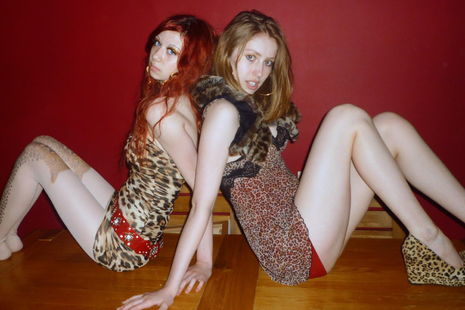Wearing animal print well
Flossie Bullion advises on how to best wear animal print, in order to convey the ways in which it was worn in the classical ages

Christian Dior said of his 1947 collection famously involving leopard print that “If you’re fair and sweet, don’t wear it”. Since then, the pattern has remained a staple of a massive variety of trends and moments, returning once again as a part of Dior’s Autumn/Winter 2024 Ready-to-Wear collection. Dior’s styling advice is a great starting point for considering the many ways in which animal print has been worn through time – it can be fierce, elegant, extravagant, even playful, but not often fair and sweet. The pattern is far too powerful and bold for that, and it is worn best by blatantly leaning into this power.
In ancient Africa and Asia, animal print was directly associated with power, both the power of the fearsome animal it was first worn by, and the warrior or hero who was able to skilfully best it. This leads us to the first way of styling animal print, to command attention and authority.
“In the clothing of the royal and the divine, leopard print conveys the majesty and danger of a big cat”
The royal and elegant
In her book on leopard print, Jo Weldon says that leopard print material was found in Tutankhamun’s tomb. It was also famously sported by Seshat, an Ancient Egyptian goddess who championed knowledge and wisdom. In the clothing of the royal and the divine, leopard print conveys the majesty and danger of a big cat, something various more recent figures have drawn on. Jackie Kennedy’s iconic leopard print coat in 1962, and Elizabeth II’s very similar leopard print coat the decade prior are key examples of wearing leopard print regally, likely an early point of reference for the dramatic, mature luxury of the Mob-Wife trend of today. To exude elegance, I recommend sticking to the texture of faux fur and incorporating more classic animal print pieces such as coats and heels, adding an edge of ferocity to a more subtle look. This more closely recalls the way in which the design was first used, as opposed to the more modern feel of printing it onto a t-shirt or trousers.
The heroic and fearsome
In Europe, the classical figures of Ancient Greece have been revered for centuries, leading to Greek heroes such as Herakles inadvertently becoming an inspirer of fashion. Herakles is easy to recognise in lots of ancient art because he is always sporting a key piece of his wardrobe – the skin of the Naeman lion he defeated as a part of his twelve labours. For him, the animal skin is worn as a direct display of his remarkable heroic strength, which led classics-obsessed men throughout history to wear animal print, in an attempt to create a sense of heroism and toughness. In the 20th century, this was co-opted by female figures who wished to unabashedly embody power, such as Eartha Kitt with her head-to-toe leopard print look in the 1950s, as well as Mel B of the Spice Girls who became iconic for her bold animal print outfits for performances. If you want to feel as powerful as Herakles in your animal print, I suggest branching out beyond leopard print to incorporate tiger and cheetah designs. Instead of cautiously sticking to animal print bags or scarves, wear statement pieces like form fitting dresses and jumpsuits, or even just a sleek and sexy going out top – the bolder, the better.
“The print began to blur lines and come to represent a less confined understanding of gender and sexuality, as well as what is ‘tasteful’ and what is not”
The wild and extravagant
Another deity notable for wearing animal print was Dionysus, the Ancient Greek god of revelry. The wildness associated with the animal was thought to reflect the wildness associated with Dionysus and all that he is patron of. Because of this wild and untamed vibe that animal print effortlessly creates, it has also become a part of various subcultures and countercultures. In the 70s and 80s, the design became involved with the camp androgyny of glam rock, combining the wealth of both masculine and feminine associations it has historically had. This continues into other subcultures such as punk and even drag, famously sported by Divine in the 1974 film Female Trouble, excellently complimenting her unapologetic devotion to everything filthy and trashy. In this way, the print began to blur lines and come to represent a less confined understanding of gender and sexuality, as well as what is ‘tasteful’ and what is not. Wearing animal print extravagantly is all about abandoning the ways in which it’s typically worn. Try to incorporate unusual pieces and loud ensembles, and don’t be afraid of straying from what is ‘tasteful’ and ‘subtle’ – the last thing animal print should be is boring.
However animal print is styled, the only unwavering quality it possesses is in conveying power. It is a power print, a bold print, and a loud print, and the key to wearing it well is to wear it intentionally and with unabashed enthusiasm.
 News / Uni Scout and Guide Club affirms trans inclusion 12 December 2025
News / Uni Scout and Guide Club affirms trans inclusion 12 December 2025 News / Cambridge Vet School gets lifeline year to stay accredited28 November 2025
News / Cambridge Vet School gets lifeline year to stay accredited28 November 2025 Science / Did your ex trip on King’s Parade? The science behind the ‘ick’12 December 2025
Science / Did your ex trip on King’s Parade? The science behind the ‘ick’12 December 2025 News / Cambridge study finds students learn better with notes than AI13 December 2025
News / Cambridge study finds students learn better with notes than AI13 December 2025 News / Pembroke to convert listed office building into accom9 December 2025
News / Pembroke to convert listed office building into accom9 December 2025








